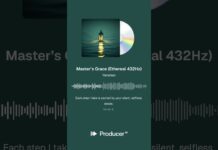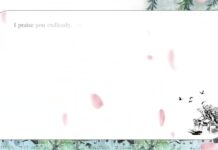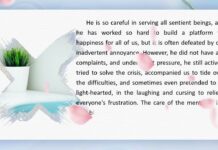Introduction
Dear Dharma Friends,
Welcome to this episode of the podcast provided by the Buddhas’ Practice Incorporated of Australia.Today, we gather to explore the profound essence of the Buddhist Scriptures, the Shurangama Sutra. This sutra is the fundamental cause of all Buddhas’ enlightenment, all Buddhas attained Buddhahood by relying on the Shurangama Sutra. If sentient beings awaken to this wondrous true mind, the authentic bodhi mind, it means they have embarked on the path to enlightenment. It is the grand framework of Buddhist teachings and the essential gateway to Zen practice. It not only encapsulates the core of the Buddha’s teachings across the five periods but also directly points to the wondrous true mind, revealing the ultimate path to perfect enlightenment. Today, I will take the meanings of the Shurangama Sutra as the core, guiding everyone to appreciate the profound wisdom of this sutra.
1、The Exalted Status of the Shurangama Sutra:
The fundamental cause of all Buddhas’ enlightenment, if sentient beings awaken to this wondrous true mind, it means they have embarked on the path to enlightenment.
The Shurangama Sutra is the supreme Dharma taught by the Buddha for the great cause of expounding, revealing, and enabling insight into the enlightened wisdom of the Buddhas. It encompasses all transformative teachings, directly pointing to the wondrous, luminous true mind—the essence of all phenomena. It expounds the true and ultimate reality, guiding sentient beings on how to manifest functions from this essence and attain the true, perfect enlightenment. As the sutra states: One who can transform phenomena is the Tathagata, observing whether the self-nature is present or not. Through this sutra, practitioners can, in a single moment, transcend the stage of Arhatship and directly reach the shore of Bodhi.
2. Why is the Shurangama Sutra Needed?
The Predicament of Sentient Beings Who Deviate from Truth and Turn to Delusion
The Buddha teaches in the sutra: “All sentient beings continue in the cycle of birth and death because they are unaware of the ever-abiding true mind, the pure and luminous essence, and instead cling to false thinking. These thoughts are not true, and so they lead to further transmigration.” Due to ignorance, sentient beings take illusions as reality, ignore their true nature, and cycle through life and death. Some cling to the Lesser Vehicle, content with minor attainments; others, without eliminating afflictions, merely accumulate the fault of excessive learning. For this reason, the Venerable Ananda, swayed by his extensive learning, fell into deviant defilements, prompting the Buddha to expound the Shurangama Sutra to establish right understanding, dispel delusion, and reveal the truth.
3. Core Principle: Dispelling Delusion to Reveal Truth, the Wondrous Luminous True Mind
The core teaching of the Shurangama Sutra is “dispelling delusion to reveal truth.” Through teachings such as breaking the mind in seven aspects, the two fundamental roots, and the eight phenomena traceable to their source, the Buddha meticulously dissects the origin of delusions, thereby revealing the reality of the wondrous luminous true mind.
Breaking the Seven Points of Clinging to the Conditioned Mind, Revealing the True Mind That Is Unmoving
The Buddha uses the metaphor of a blind person gazing into darkness to illustrate that “the nature of seeing is not the eye,” and that the nature capable of seeing is the wondrous luminous true mind. Using the example of bending the finger and the fleeting light, it is proven that the nature of seeing is unmoving and unchanging. Through eight phenomena that can be traced back to their source, the scripture awakens one to the nature of seeing, pointing out that the nature of seeing is neither extended nor contracted, neither is nor is not, and that the pure, perfect true mind transcends all forms, emptiness, and perceptions of hearing and seeing.
Breaking the Notions of Nature and Causes and Conditions, Revealing the Delusion Devoid of Truth
The Buddha further refutes the erroneous views of non-Buddhists and the Lesser Vehicle regarding nature and causes and conditions, declaring that the seeing that can be seen is not the seeing, and that the nature of seeing is not a material thing. All sense faculties, physical forms, and worldly phenomena arise from delusion. The scripture uses the analogy of one person representing many and one country representing all countries to illustrate the illusory nature of individual and collective karma, concluding that “the entirety is true” all phenomena arise dependent on the wondrous luminous true mind.
Integrating the Nature of the Tathagatagarbha, The Self and the Object are of the Same Root
The scripture extensively covers the aggregates, entrances, places, realms, and the seven elements, integrating all into the nature of the Tathagatagarbha. The true mind is like empty space, not rejecting the manifestation of all phenomena; the one and the many respond to each other, the small and the great mutually contain each other, essence and function are non-dual. The so-called, “It is identity and negation,” the wondrous true nature transcends verbal expression, perfectly illuminating the entire Dharma realm.
The Parable of Yajnadatta: Delusion Has No Cause, Only the Truth is Eternal
The Buddha uses the parable of Yajnadatta, who frantically ran after seeing his reflection in a mirror, to illustrate that delusion has no cause, while the true mind is ever-abiding. Sentient beings, due to ignorance, become confused, turning away from the truth and pursuing the delusion. If they can awaken, they will immediately realize the truth.
4、The Practice of Perfect Conduct: From Intellectual Understanding to True Cultivation
Understanding the perfect principle of the wondrous luminous true mind is not enough; without practice, one cannot attain realization. Therefore, the Shurangama Sutra further expounds the path of perfect conduct and practice.
Two Decisive Meanings: The Intention and the Choice of The Root
The essence of practice lies in “first examining the resolve on the cause-ground and subduing ignorance.” Taking the Bodhi mind as the cause, eliminating adventitious afflictions and fundamental ignorance is the guiding principle of practice. Secondly, one must investigate the root of afflictions and select, from the six organs, the one that aligns with perfect penetration. In the sutra, the ear organ is presented as the expedient means for beginners, teaching returning the hearing to hear your own nature and practicing in reliance on self-nature to fully abide in the true mind.
The Twenty-Five Holy Methods and the Fourfold Pure Precepts
The Buddha expounds the twenty-five methods of enlightenment of the sages, with Manjushri Bodhisattva specifically selecting the ear organ as the most accessible approach for beings in the Dharma-ending age. The sutra also teaches the rules for collecting thoughts and eliminating the ten evil deeds, establishing a practice sanctuary, and the four pure clear instructions, safeguarding practitioners from demonic obstacles.
Three Gradual Stages and the Fifty-Five Stages of the True Bodhi Path
Practice requires eliminating the contributing causes (habitual afflictions), truly cultivating the nature of rectification (practicing in reliance on self-nature), and transcending present karma (not following the flow of karmic forces), thereby achieving the fifty-five stages of the true Bodhi path. Ultimately, perfecting Bodhi and returning to the state of non-attainment, one realizes the ultimate, indestructible fruit.
5、Guarding the Path Against Demons: The Seven Destinies and the Fifty Skandha Demons
The Shurangama Sutra not only teaches proper cultivation but also warns of obstacles in practice. Beings in the seven destinies are born due to emotions and thoughts. If practitioners do not purify their body and mind according to the precepts, they are easily disturbed by the fifty skandha demons. Therefore, the sutra elaborates on the practice of precepts and the methods to guard against demons, protecting meditation and helping practitioners stabilize their resolve on the path.
6、The Teachings, Practice, and True Nature are All Shurangama
The teachings, practices, and principles of the Shurangama Sutra are all referred to as “Shurangama,” which means ultimate and indestructible. Based on the ultimate and indestructible principle, one establishes the ultimate and indestructible practice; through the ultimate and indestructible practice, one realizes the ultimate and indestructible true nature. The teachings, practice, and true nature complement each other and are indispensable.
7、 Conclusion: Devote Your Mind to the Shurangama, Return to the True Self
The Shurangama Sutra is a profound and magnificent teaching! For those who wish to return to their true self and realize their self-nature, the only path is to diligently study this sutra and practice according to its teachings. Let us take bodhicitta as the cause, and the perfect penetration through the ear organ as the skillful means. By Returning the hearing to hear our self-nature, we can subdue and cut off ignorance, perfectly attain bodhi, return to the state of non-attainment, and realize the ultimate, unshakeable fruition!
May all of you, by relying on the wisdom of the Shurangama Sutra, break through delusion and manifest the truth, swiftly realizing bodhi! Amitabha!
Thank you all for listening!





